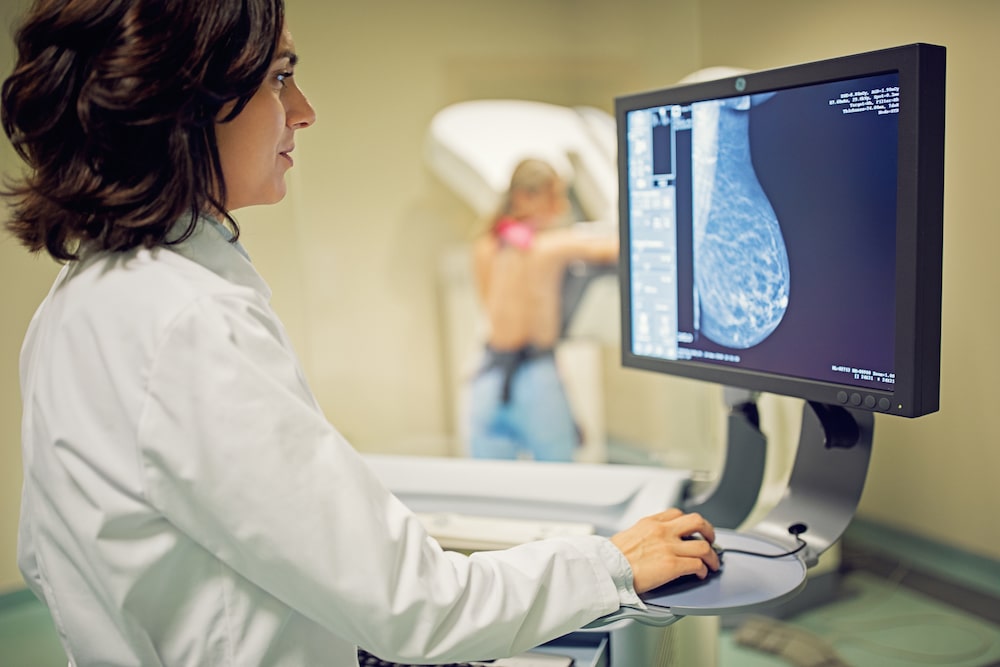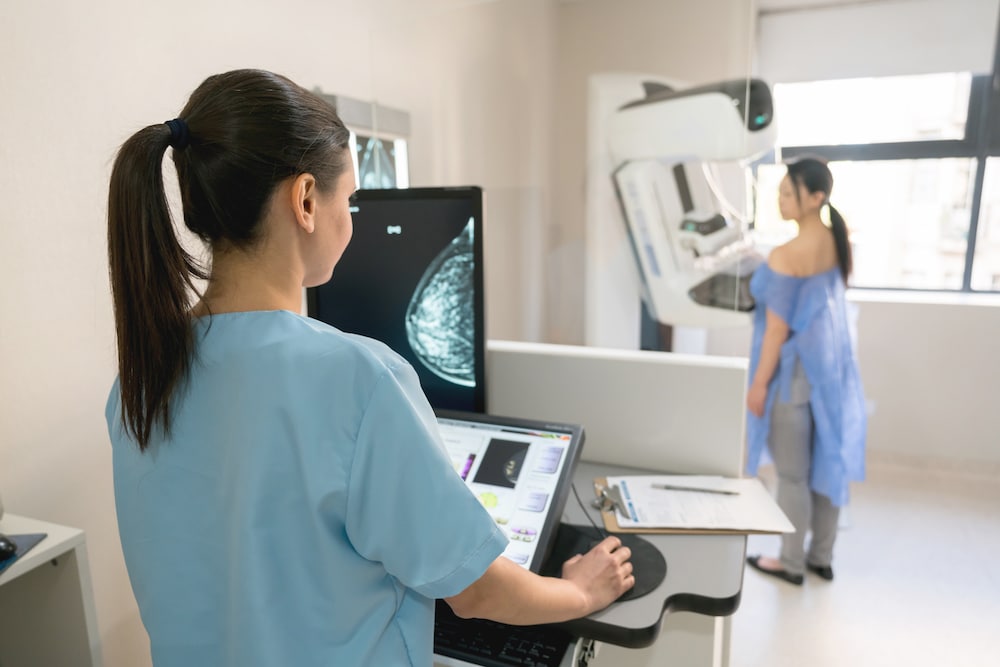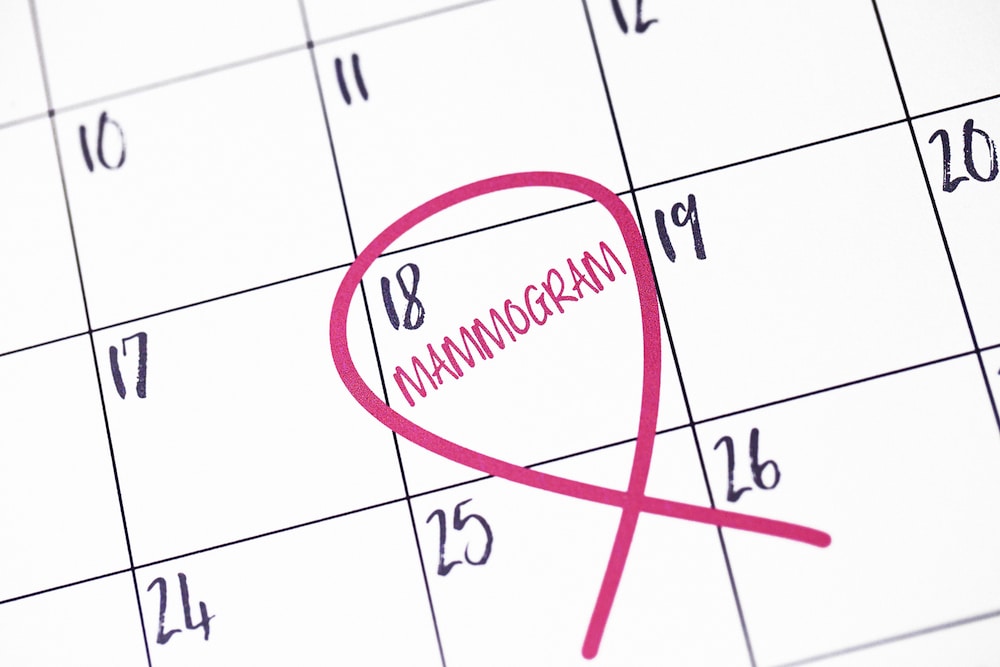The key to surviving breast cancer is early detection. Mammograms play a key role in finding early signs of breast cancer. Although there is some disagreement on how often to have a mammogram, there’s no debating their importance in helping us beat breast cancer. Here’s more information on the mammograms we provide at Summit Healthcare in Show Low & Pinetop, Arizona.
What is a mammography?
Mammography is X-ray imaging of your breasts to screen for breast cancer. Mammography can be used either for screening or for diagnostic purposes in evaluating a breast lump.
"Just spent time with mammography dept. Speaking as a retired healthcare director, the care was top notch. Staff were very friendly and helpful from the moment I arrived. Maryann performed my test in a kind and professional manner. She is an exceptional employee."
Types of Mammograms
Mammograms take X-ray images of your breasts. There are two types of mammograms:
- Screening mammogram — This is used to check for breast cancer in patients who don’t show any signs or symptoms or new breast abnormalities. These mammograms involve taking two X-rays of each breast to look for hidden tumors or microcalcifications that cannot be felt by a tactile breast exam.

- Diagnostic mammogram — These mammograms are used to check for breast cancer where suspicious changes in the breast have been found, such as a new breast lump, breast pain, an unusual skin appearance, nipple thickening, or nipple discharge. These mammograms are also used to further investigate abnormal findings in a screening mammogram.
How do mammograms work?
Mammograms are X-ray images of a woman’s breasts. The X-ray machine is specially designed for mammograms. In a mammogram, the patient stands and places one of her breasts on a platform that is adjusted to the correct height. A clear plastic plate then descends and applies pressure pushing the breast onto the platform. This flattens out and compresses the breast tissue to allow the X-ray to better penetrate the breast tissue. This pressure also holds the breast still to decrease blurring.
What is the purpose of a mammogram?
The purpose of mammograms is to detect breast cancer. As mentioned above, they can be either for routine screening or for diagnostic purposes after a suspicious change has been detected in a breast. Mammograms need to be accompanied by regular breast self-exams.
At what age should I get a mammogram?
There isn’t a “set” age to start screening for breast cancer with mammograms. Plus, there is some disagreement within the medical community about when a woman should begin and how frequently they should have mammograms. Risk factors, personal preferences, and weighing the benefits and risks of these tests all need to be considered. There are some general guidelines:

- For women with an average risk of breast cancer — Many women begin having mammograms every one to two years once they hit their 40th birthday. The American Cancer Society recommends starting at age 45 and having an annual mammogram until age 54, then continuing every two years until you reach 65. Other groups recommend screening every two years starting age at 50 and running until age 74.
- For women with a high risk of breast cancer — Risk factors such as a family history of breast cancer or a history of precancerous breast lesions could prompt your doctor to recommend screening mammograms before the age of 40. In some cases, your doctor could recommend mammograms be accompanied by MRIs.
How often should I get a mammography?
As noted above, there is some disagreement when it comes to when to begin having mammograms and how often to then do so. You need to discuss the benefits and limitations of mammograms with your doctor to see what you think is best. More doctors would probably recommend yearly mammograms starting either at 40 or 45. The U.S. Preventive Services Task Force mammogram guidelines recommend having these tests every other year beginning at age 50.
Preparing For Your Mammogram
There isn’t anything you really have to do to prepare for your mammogram. Some women find the pressure from the glass plate that flattens the breast tissue to be uncomfortable, so they take over-the-counter pain medication before their test. It’s also a good idea to schedule your mammogram when your breasts are the least likely to be tender. This would be the week after your menstrual period ends. Don’t put on deodorant, antiperspirant, powder, lotions, creams, or perfumes under your arms or on your breasts the day of your mammogram, as metallic particles in these items can be visible on the mammogram and cause confusion when reading the images.
What To Expect During Your Mammography
When you come in for your mammogram at Summit Healthcare, we give you a gown and you remove any jewelry and clothing from the waist up. You then stand in front of the mammogram machine. Our technician places one of your breasts on the platform after it is adjusted to your height. Your technician then instructs you how to position your head, arms, and torso to provide a clear view of your breast. Once in place, the clear plastic plate descends from above your breast.

It applies pressure to your breast to spread out the breast tissue. This pressure doesn’t harm your breast, but it can be painful for some women. If it feels too painful, tell your technician.
When your breast is properly compressed to even out the thickness of the tissue so that the X-rays can penetrate the entire breast, the X-ray is taken. During the brief actual X-ray duration, you hold your breath and stand completely still.
How are my results read?
Once we have taken images of both of your breasts, the technician checks the quality of the images. If any of the images are blurry or otherwise inadequate, we may have you repeat part of the test. Once we believe your images are of the necessary quality you’re done and can go home. Your results will be read usually within a few days and the results will be given to your doctor. Our Summit Healthcare radiologists look for evidence of cancer or noncancerous conditions that may require further testing, follow-up, or treatment.
These are issues they are looking for:
- Calcium deposits (calcifications) in your ducts and other tissues
- Masses or lumps
- Asymmetric areas
- Dense areas appearing in only one breast or one specific area
- A new dense area that has appeared since your last mammogram
Are mammograms safe?
Mammograms are effective tools in the detection of breast cancer, but they are not foolproof. They also deliver a low dose of radiation. The biggest risk can be false-negative or false-positive mammograms. Here are the risks and limitations:
- Radiation — You do receive a very low dose of radiation. For most women, the benefits far outweigh the risks posed by this low amount of radiation.
- Accuracy — Mammograms deal with tissue in the breasts and this varies dramatically from patient to patient in density and how glandular the breasts are. This can result in incorrect readings.
- Younger women — Younger women have breasts with more glands and ligaments than older women. These can obscure signs of cancer. With age, the breasts become fattier, making it easier to see changes on mammograms.
- More testing — In about 10 percent of mammograms, readings merit additional testing, including tests such as ultrasound or a biopsy to test suspicious breast tissue. Most of these abnormal findings, however, still usually are not cancer.
- Can’t detect all cancers — Some cancers may be felt in a physical exam, but may not show up in the mammogram. The cancer may be too small or in an area where it is difficult to see. Mammograms miss about 20 percent of cancers.
Mammography Services At Summit Healthcare
- Breast Ultrasound
- Digital Mammography with CAD (computer-aided detection)
- Breast MRI
- Osteoporosis Screening “DXA”
- Stereotactic Breast Biopsy
- Ultrasound-Guided Breast Biopsy
- Needle Localizations
- Softer Mammogram Provider (Mammo Pads)
- All technologists and radiologists are registered and board certified
- ACR/FDA accredited
Our Snowflake Outpatient Imaging Center located in Snowflake, Arizona also offers many of the same women’s imaging services.
Our Locations

Summit Healthcare
2200 E Show Low Lake Road, Show Low
For more information please call 928.537.6554
Snowflake-Taylor Outpatient Center
1121 South Main Street, Snowflake
For more information please call 928-536-5858
Hours of Operation
8:00am – 5:00pm Mon – Fri
Schedule Your Mammography Today!
To schedule your mammography at Summit Healthcare, call us at 928.537.6554 to make an appointment. Our practice serves Show Low, Pinetop, Snowflake and surrounding areas in Arizona.
